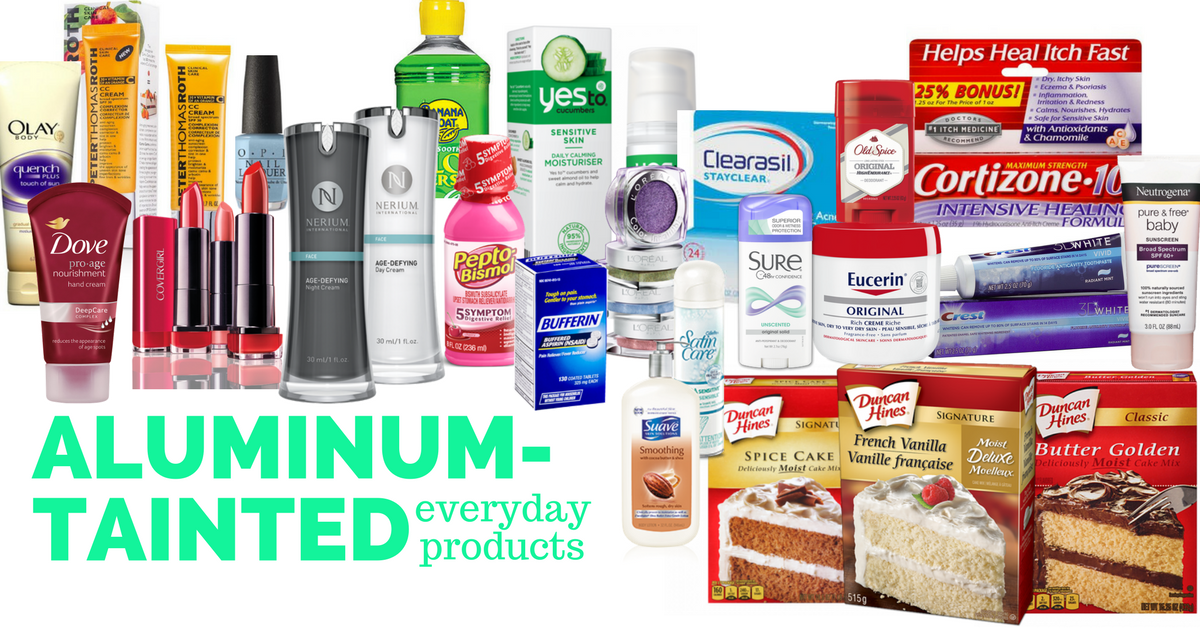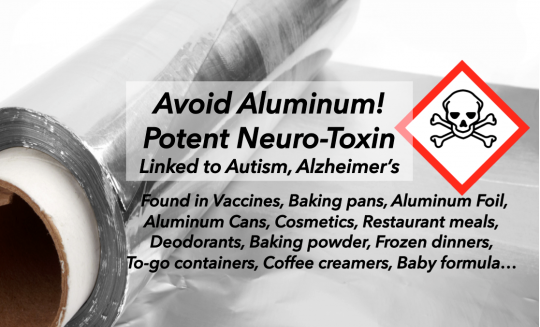Avoiding Aluminum tainted products

Aluminum is the most widely distributed metal on the planet and it’s used in the production of many every-day products. Cookware is made from aluminum, soda cans are aluminum, and aluminum foil is found in most kitchens. Aluminum is also in antacids, aspirin, vaccines, and even flour. This overwhelming infestation of aluminum means that your risk of exposure is through the roof, which is also made of aluminum. This is a great resource guide that addresses Aluminum-Tainted Everyday Products.

Unlike vitamins, minerals, and trace elements, the body does not need aluminum. And aluminum is no innocent or benign participant. Aluminum accumulates in the kidneys, brain, lungs, liver, and thyroid where it competes with calcium for absorption and can affect skeletal mineralization. In infants, this can slow growth. Animal models have linked aluminum exposure to mental impairments. [1]
Many of the symptoms of aluminum toxicity mimic those of Alzheimer’s disease and osteoporosis. Colic, rickets, gastrointestinal problems, interference with the metabolism of calcium, extreme nervousness, anemia, headaches, decreased liver and kidney function, memory loss, speech problems, softening of the bones, and aching muscles can all be caused by aluminum toxicity. To minimize the risk of degenerative brain, bone and other diseases, reductions in oral and topical exposure to aluminum and aluminum compounds are highly recommended. Download your free copy of Aluminum Tainted Everyday Products from the CHILDREN’S MEDICAL SAFETY RESEARCH INSTITUTE
Read your labels:
Key to Aluminum Compounds: FD&C — Federal Drug Administration designation for dyes approved for food (F), drugs (D) and/or cosmetics (C).
Lake — pigments or dyes that are precipitated with metal salts such as aluminum, calcium, barium, or others.
Alumina (aka aluminum oxide) — white granular chemical compound of aluminum (derived from refined bauxite ore) and oxygen.
Aluminum Hydroxide — antacid used to treat heartburn and indigestion.
Aluminum Sucrose Octasulfate Magnesium Aluminum Silicate, Aluminum Tristearate — thickening agent to prevent liquid makeup from separating or becoming runny.
Aluminum Stearate — a colorant and emulsifier in cosmetics.
Aluminum Starch Octenylsuccinate, Aluminum Dimyristate, Sodium AluminoSilicate — anti-caking agents.
Calcium Aluminum Borosilicate — a glass-type material used as a bulking agent.
Aluminum Chlorohydrate, Aluminum Zirconium Octachlorohydrex, Aluminum Sesquichlorohydrate — antiperspirant and astringent agents.
Other antiperspirant agents: • Aluminum Chloride — alters sweat-producing cells • Aluminum Zirconium Tetrachlorohydrex — obstructs pores in the skin to prevent sweat from leaving body • Aluminum Zirconium Tetrachlorohydrex Glycerine Complex — obstructs pores and absorbs moisture • Sodium Silver Aluminum Silicate — inhibits growth of skin bacteria produced by sweat • Potassium Alum – agent used in processing cheese, pickling and as an oral health astringent • Sodium Aluminum Phosphate – stabilizer agent in processed food
Learn more about the toxicity of aluminum and health concerns




